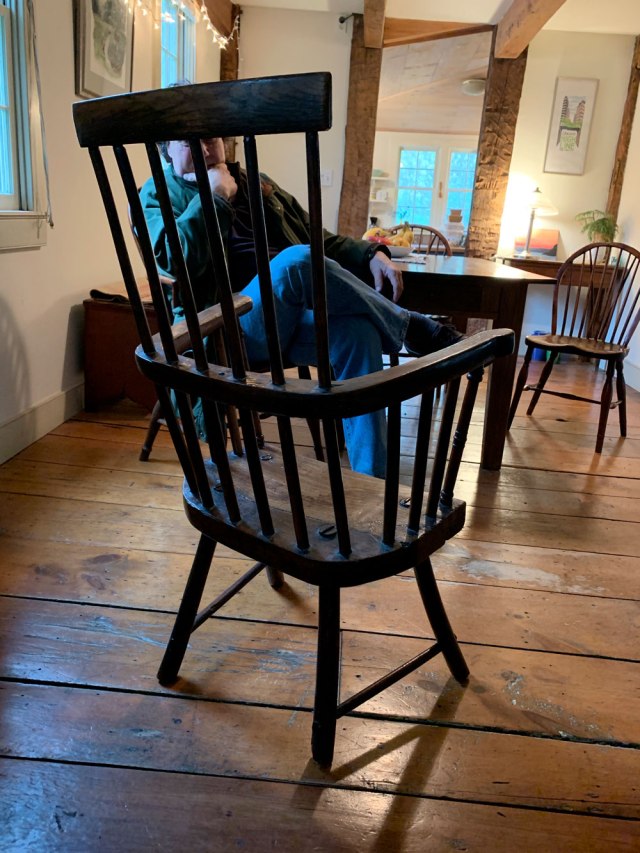
Welsh stick chairs turn up in some of the strangest places, including the Hudson Valley of New York.
Today on my drive home from Fine Woodworking LIVE (the event was wonderful), I was invited to stop by the shop of John Porritt, a woodworker who trained in the U.K., has made many traditional chairs and now lives and works in a small town in Upstate New York.
While a lot of Porritt’s work is in the restoration of old chairs and tools, he also builds new English and Welsh chairs using traditional methods. In fact, John Brown praised one of Porritt’s Welsh chairs in one of his Good Woodworking columns in 1995 (which is about as good as it gets for chair praise).
Porritt’s shop is scenically located behind his 1700s-era house and tucked next to a swift-running stream. It’s an old barn with a big front door, one window and plenty of space for Porritt’s band saw, workbench and all the old wood he brought over from the U.K. when he and his American wife moved to New York in 2008.
In addition to being stocked with impressive stacks of old wood (some of it 300 years old), Porritt’s shop is full of chairs he has built and collected over the years. I could write a blog entry about each of these chairs – Porritt has fantastic taste in vernacular chairs – but I didn’t have time to take notes as he described each one.
So you’ll have to settle for some shallow descriptions that I hope are accurate.
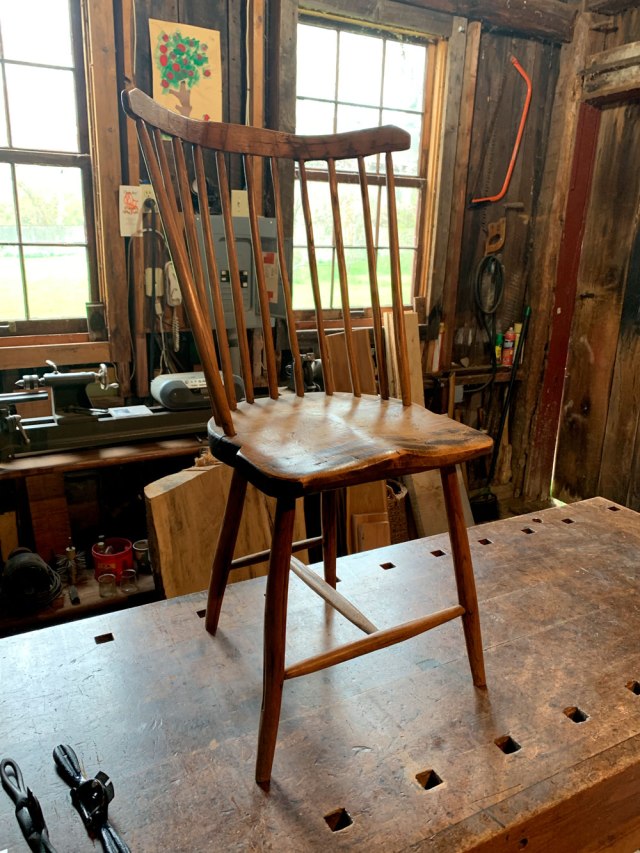
One of the first chairs he showed me was this vernacular American Windsor. We see few to none of these sorts of chairs in the Midwest, so it was a delight to look it over. The wide sweep of the chair’s crest made it quite comfortable. The saddling of the seat was unusual. It’s wasn’t uncomfortable, but it was nothing my buttocks had felt before – the seat’s pommel was longer than is typical.
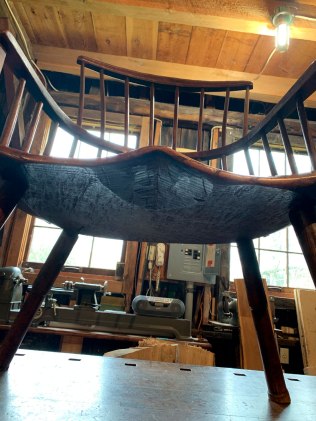

Also fascinating is this chair. It is remarkably similar to some of the earliest known English Windsors that were advertised for sale in 1725. The seat and the way it is saddled is astonishing. It has been heavily sculpted above and below to create a seat that looks like it is thin and has been bent like a modern Eames chair. But it’s a solid piece of fairly thick wood.
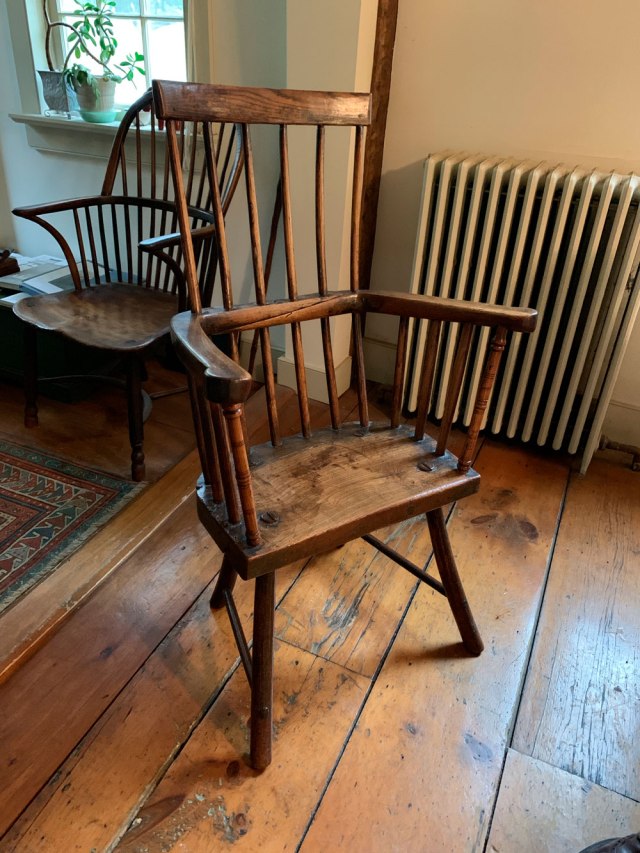
Inside Porritt’s house is his favorite chair, a Welsh stick chair that presses all of my buttons. The legs are slightly curved outward. The armbow is made from a branch that was resawn and then scarfed together with a long diagonal joint. The seat reflects the shape of the armbow. And the undercarriage is similar to some chairs I’ve seen at St Fagans.
But it’s the overall effect of the chair that is what’s lovely. Porritt says it’s the last thing he sees every night before he goes to bed and it makes him happy.

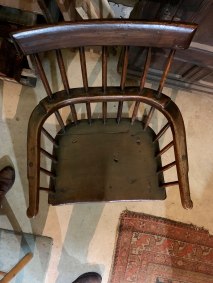
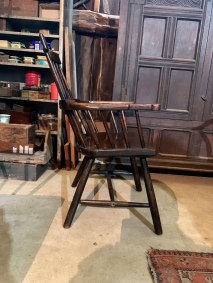
Back in the workshop, this little Welsh chair is also a looker. The rake of the spindles, the shape of the arm and the details of the crest are some of the highlights of the chair. (You’re going hear a lot more about this chair in the future as I purchased it from Porritt.)
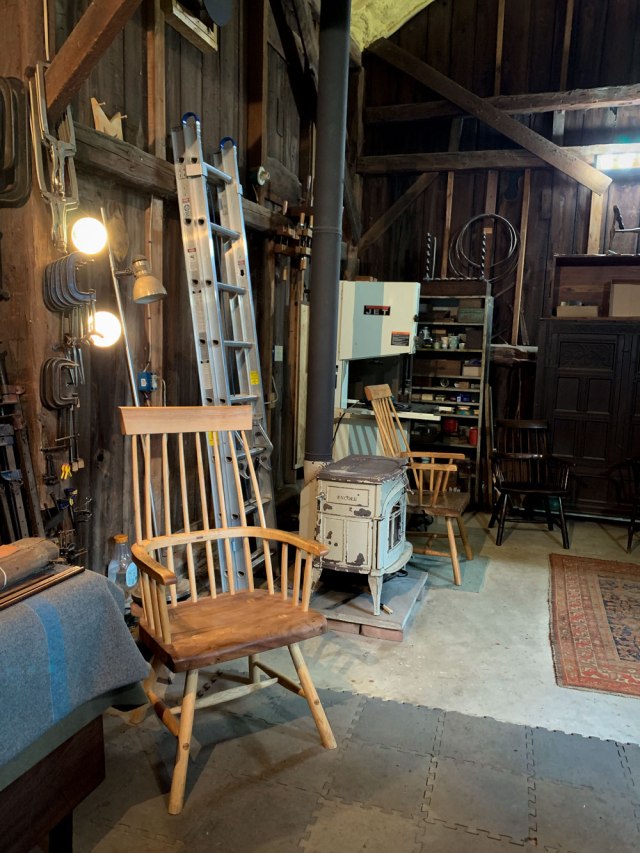
Here you can see two of Porritt’s chairs on either side of his wood-burning stove in his shop. His chairs sit very well and harness a lot of the details of Welsh chairs that I love. His chairs reminded me a lot of Gareth Irwin’s chair that I saw in my visit to Wales last year.
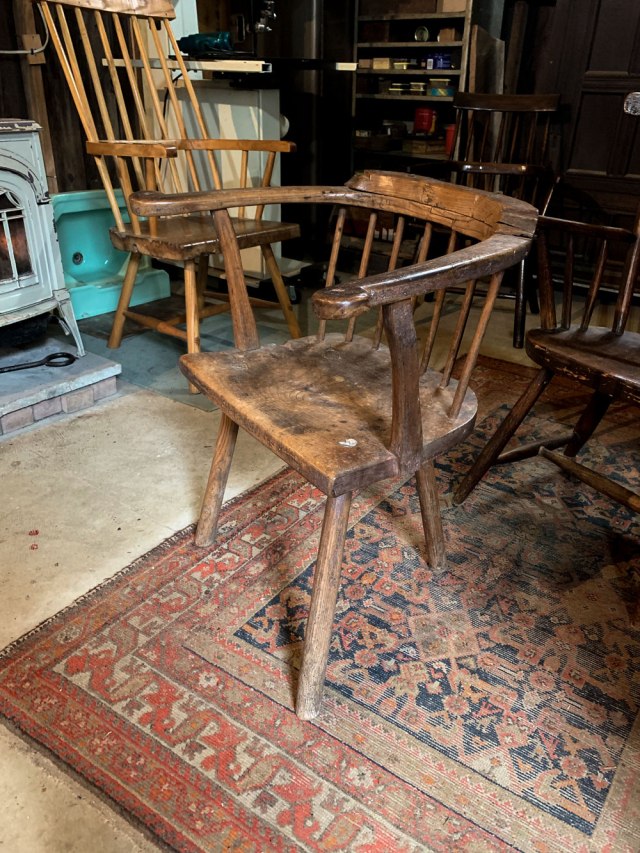
Here’s another Welsh chair that is on the small side. I immediately assumed the chair had once been a comb-back and had suffered a comb-ectomy. Porritt said he was 90 percent certain that was not the case. He’d found bits of the original red paint lodged in the top of the chair’s sticks. The patination on this chair was quite lovely.

Finally, this Windsor chair that Porritt thinks was made by someone who also made ladderbacks. Porritt says many of the chair’s details, including the shaved components and the way the spindles were made, suggested a ladderback chairmaker had produced this chair.
I took a lot more photos, but I need to get to sleep. I’m sure you’ll be hearing a lot more about Porritt in the coming months – he gives talks to organizations and schools on his craft – and we might even be able to lure him to Covington to teach a class next year.
— Christopher Schwarz